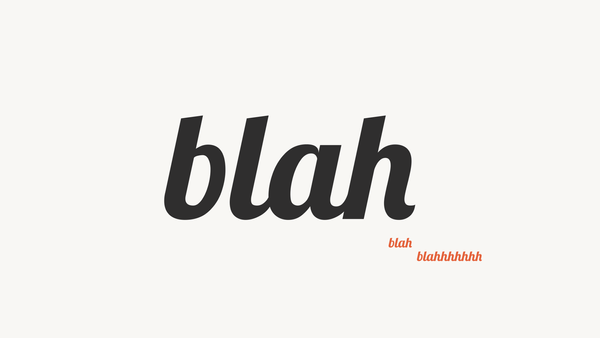the messaging is the hardest part — tincan #003

You've got to say it all without saying much.

Maybe you remember Ace of Cakes, the 2000s-era Food Network show about a Baltimore cake shop where they used power tools and insane artistry to make sculptural (and oftentimes massive) cakes. If you do, we have a lot to talk about. It was awesome.
Each episode followed a week’s worth of cakes from the initial customer brief to the nerve-wracking nearly-dropped-it final delivery. But the cake stuff was only half of what made the show great. It was the artists/decorators, who could masterfully avoid a cake-tastrophe with one strategically-placed fondant flourish, that made the show so phenomenal. Those punks could make anything out of cake. It was riveting to watch them work. They also had great banter, swore a lot, pranked each other, and genuinely seemed to enjoy their time together.

Ace of Cakes has been at the top of my mind recently because I came across a signed first edition of the AoC book at a bookstore. Flipping through its pages has reactivated long-forgotten tidbits from the show, including Duff’s epic line during the show’s opener:
“After pastry school, I decided to make cakes my way. [guitar riff] So I set up shop and hired the most talented people I know: my friends.”
I can’t get it out of my head because 1) it’s an absolute banger of an intro (iykyk) and 2) it’s super effective messaging. Those two lines of voiceover manage to encapsulate the entire world of Ace of Cakes. It conveys purpose and expertise, establishes a niche, gives context, and oozes personality. It’s super hard to write good messaging like that.

messaging is so hard
In Design 101, there’s a ritual used to critique a piece of work where the class first looks at the piece from across the room and then moves forward to look at it again up close. A successful design should, regardless of the distance, be able to direct viewers’ attention to the right places and deliver the message — albeit two versions of the same message.
The same goes for writing about your brand: you should be able to encapsulate your brand in one sentence (glancing at it across the room) and one paragraph (digesting it up close). Somewhat shockingly, those two short snippets will become the foundation of everything that follows. But they’re the hardest words to write because they need to contain so much substance in so little real estate.
I don’t have any tried-and-true tricks up my sleeve when it comes to messaging (I’m not a copywriting expert) but I did some research by combing through a bunch of local brands’ websites to better understand what works and what doesn’t. From what I found, here are the components of good messaging:
- purpose
what you do - differentiation
what sets you apart - approach
how you do it - context (sometimes)
what influenced you - expertise (sometimes)
why people should trust you - personal touch (sometimes)
how you are/je ne sais quoi
And here are two brands that put those components to work beautifully:
Uncle Bobbie’s in Germantown

Okie Dokie Donuts in South Philly

Not every business can achieve the same level of clarity as the two above examples because not every business is equally distillable. Success will look different for nearly everyone. It’s also likely that after you start writing you’ll get your wheels turning, and then you’ll turn around to find that you’ve covered a lot more ground than what’s outlined above — that’s great too. This isn’t an exhaustive list. Sometimes fleshing everything out to its full-length glory is the only way for you to effectively explain yourself. But there’s a place for length and there’s a place for clarity and you’ll have to figure out where and how to do which.
Here’s a bigger batch of some of the other folks who I referenced and learned from along the way. Even just reading through their one-liners is inspiring and helpful.
Kith & Kin
“A gathering space for kids and their grown-ups to play, grow, and find community.”
FarmerJawn
“FarmerJawn is reintroducing farming into the lifestyles of urban people to cultivate physical, social, & environmental health.”
Tufas Boulder Lounge
“Philadelphia-based bouldering gym focused on building the best boulders possible, fun, accessibility, inclusivity, equity, and community.”
Honeysuckle Provisions
“Honeysuckle Provisions is a family-owned and operated Afro-centric grocery/cafe committed to the highest quality standards, from not only a culinary perspective but also socially and politically.”
Tiny WPA
“Tiny WPA helps build better-designed spaces, stronger places, and equity by supporting citizen-led design improvements and the growth of Building Heroes.”

about anne marie
Anne Marie is a designer and diy-er who lives in Philadelphia with her partner, Alyssa, and two cats and a dog. You can find her on Instagram and LinkedIn and at amlindemann.com. Reach her directly at: annemarie [at] amlindemann [dot] com.





